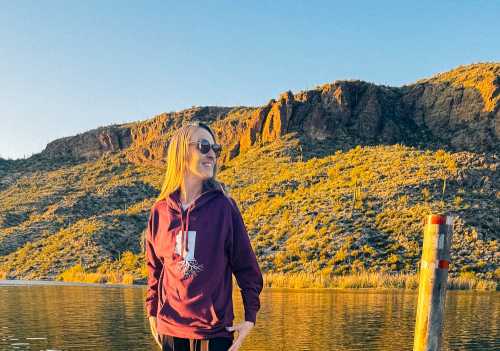Yosemite National Park encompasses almost 1,200 square miles in California’s Sierra Nevada mountains, about 170 miles west of San Francisco. Yosemite Valley was first protected in 1864 when President Abraham Lincoln signed a grant declaring it to be federally preserved land. In 1890, after successful lobbying by John Muir, Congress established the valley and the areas around it as a national park, an act which eventually led to the National Park System that protects areas throughout the USA. Yosemite National Park’s immense and fascinatingly diverse landscape attracts visitors from all over the world, and with the park home to one of the finest national park hotels in the US, staying there is truly a bucket-list experience.
What Makes Yosemite National Park Special?
Yosemite, immortalized in the photographs of Ansel Adams, is famous for its towering waterfalls, giant sequoia trees, renowned Tunnel View, and the iconic granite cliffs of Half Dome and El Capitan. The vast valley also has lakes, rivers, broad meadows, and an expansive wilderness area. With so much to explore and discover, it is no wonder approximately four million people visit Yosemite National Park every year.
How To Get To Yosemite National Park
The park is accessible through several entrances on the west, south, and east. Yosemite National Park can be especially crowded during spring and fall, so it is worth mentioning that there are buses to Yosemite Valley from cities throughout the state. You can also make use of Amtrak or Greyhound to arrive in the nearby town of Merced. From there, bus service is provided by YARTS to several areas of the park. If you decide not to drive, a free shuttle system makes stops throughout Yosemite Valley. For those visiting from out of town, the nearest airport is Fresno-Yosemite International (FAT), which is about a 90-minute drive from the southern edge of the park. Reservations are not required to visit the park but are recommended for overnight stays.
Entrances
Visitors can enter Yosemite National Park on Highway 120 through the Big Oak Flat Entrance or Hetch Hetchy Entrance. Highway 140 also provides access on the western side of Yosemite through the Arch Rock Entrance on Portal Road. The South Entrance allows visitors to enter from Highway 41. Tioga Pass Entrance provides the only access from the east. Tioga Road closes for winter, generally from November to May or June, and the park can only be accessed from the west or south during those months.
Visitor Centers, Hours, and Fees
The Valley Visitor Center, located in Yosemite Village, operates year-round with rangers, a bookstore, and an educational theater and exhibit hall. There are additional visitor centers and an information center near Tioga Road, Highway 41, and Highway 120 entrances. From May to October, the Valley Wilderness Center provides wilderness permits and camping resources.
Yosemite is open every day of the year, 24 hours per day, except for the Hetch Hetchy Entrance which is only open during daylight hours. The entry fee is $35 for non-commercial vehicles with up to 15 passengers and $20 per person entering by foot, horse, bicycle, or non-commercial vehicle with over 15 passengers. Fees can be paid in advance or on arrival and are good for seven days.
Best time to visit Yosemite National Park
Every season presents an opportunity for a unique experience at Yosemite National Park. Spring is the ideal season to enjoy the park when waterfalls are at their most glorious. Keep in mind that there can still be snow as late as early summer and tire chains might be required. Summer means warmer temperatures, except for the higher elevations, and wildflowers blooming in Yosemite Valley, Wagon, and Tuolumne Meadows. Many of the trees in the park are evergreen, but fall does bring some lovely color and fewer crowds are a big plus.
Though Yosemite is open year-round, there are areas of the park that cannot be accessed by car due to snow, generally between November and May. That being said, Yosemite in winter usually means beautiful snowy trees and rocks, some flowing waterfalls, and an atmosphere of solitude.
Where To Stay In Yosemite National Park
Arguably the best way to enjoy Yosemite to the fullest is to stay right inside the park and there is a wide range of options available — from pitching your own tent to elegant hotel rooms.
Camping
There are 13 campgrounds, including tent, RV, and wilderness sites, located throughout the park. If you want the camping experience without packing in your own gear, there are several tent cabin villages as well. Housekeeping Camp is a favorite of many visitors, with its unique tent cabins and gorgeous views.
Cabins and Lodges
Book an upscale room at The Ahwahnee, a stunning 1920s hotel with some of the best views in the park, or stay at the Victorian Wawona Hotel with its lush green surroundings. Yosemite Valley Lodge, White Wolf Lodge, and Glacier Point Ski Hut provide more rustic lodging, especially suitable for groups.
Offering almost every type of stay available in the park, Curry Village is a Yosemite National Park treasure and is the park’s largest lodging facility. It was founded in 1899 and features hotel rooms, wood cabins, and tent cabins, along with several dining options and activities.
Places To Stay Near Yosemite National Park
In the communities just outside of the park entrances, there are plenty of other places to stay, including campgrounds, private home rentals, bed and breakfast stays, and hotel rooms. For example, visitors can stay at the charming Tenaya Lodge in Fish Camp or A Bed of Roses Bed and Breakfast in Oakhurst, both in the area outside of the South Entrance.
To the west, the luxurious Blackberry Inn Yosemite has spacious rooms, fireplaces, and fresh-baked cookies to recharge between adventures. During the summer months, consider staying at the Mono Vista RV Park in the town of Lee Vining near the eastern entrance.
Things To Do In Yosemite National Park
There are almost too many things to list when it comes to activities in this natural wonderland. From remote wilderness trekking, walking through vast flowering meadows, rafting, downhill or cross-country skiing, hiking, rock climbing, chasing waterfalls, or drinking in breathtaking views of the valley, there is a tremendous list of things to do, see, and enjoy. Whether you are visiting for one day or several days, here are just a few highlights to inspire your Yosemite National Park itinerary.
Hiking in Yosemite National Park
Yosemite is a hiker’s paradise with more than 750 miles of trails, and hiking is genuinely one of the best ways to discover the park’s beautiful features. You will find many of the most popular trailheads right in Yosemite Valley.
If you prefer an easy and accessible hike, Cook’s Meadow Loop is a one-mile trail that takes you on an easy walk into the heart of Yosemite Valley, where you are met with incredible views of Half Dome, Yosemite Falls, Glacier Point, and Sentinel Rock. Another easy hike, Lower Yosemite Fall Trail, brings you close to the last segment of North America’s tallest waterfall, Yosemite Falls. Stand on the footbridge and marvel at a full view of this amazing waterfall.
If you are up for more of a moderate hike, the Yosemite Valley Loop Trail, approximately 11.5 miles round trip, leads you through dense forests and meadows, and along a river, all while providing stunning views of Bridalveil Fall and Yosemite Falls, Cathedral Rocks, El Capitan, and more. Whereas the Yosemite Valley Loop Trail is mainly flat, The Vernal Fall, Nevada Fall, and Yosemite Falls Trails require a bit more effort and steep climbs, but reward hikers with up-close views of these thundering waterfalls.
Yosemite also has many lakes and rivers, but most require hiking to access them. One of the most accessible lakes is Tenaya Lake, which can be seen from Olmsted Point during the summer when Tioga Road is open. Mirror Lake, in the middle of Yosemite Valley, is famous for its reflections of Yosemite’s most famous rock formations when there is enough water, usually during spring and early summer. A 2-mile round-trip hike takes you to the lake, or you can take the 5-mile loop around the lake.
Half Dome, El Capitan, and Other Rock Formations
For the most adventurous hikers visiting Yosemite National Park, Half Dome Day Hike ascends almost 4,800 feet above the valley floor. This strenuous hike up to the top of Yosemite National Park’s most famous rock is not without danger or reward. This is a true wilderness adventure and it takes most hikers 10 to 12 hours to complete the round-trip hike.
The last part of the approximately 15-mile hike is a 400-foot climb up the face of Yosemite’s iconic Half Dome using a set of two metal cables, which are only up from late May to early October. From the summit, hikers enjoy unparalleled views of the Yosemite Valley and High Sierra.
Perhaps the second most-recognized rock formation in Yosemite National Park is the massive El Capitan. Like Half Dome, this enormous granite monolith can be seen from many areas of the park. Experienced rock climbers love the challenge of making their way up El Capitan, which stands at 3,000 feet above the valley floor. Though less photographed and mentioned than Half Dome and El Capitan, there are other famous and beautiful rock formations that make up the park. Opposite El Capitan, Bridalveil Creek runs along the striking Spires and Cathedral Rocks. The Three Brothers, a trio of sharp peaks, stand just to the east of El Capitan. If you hike to Lower Yosemite Fall, you will have a wonderful view of Sentinel Rock which, as its name implies, stands tall like a sentry looking over the valley.
The spectacular rock formations that characterize Yosemite National Park are not only awe-inspiring to look at but geologically fascinating. Most of the rock in the park is granite and is evidence of volcanic activity around and under the park long ago.The rocks that loom over Yosemite Valley today were formed by bodies of molten rock, or magma, that cooled and crystallized to form granitic rocks. These monumental rocks have been exposed largely by glaciers and rivers moving through the valley over thousands of years. While there may have been no erupting volcano in Yosemite National Park, there are small amounts of volcanic rocks inside the park, direct results of eruptions of the Mono and Inyo volcanoes just outside of Yosemite.
Glacier Point Yosemite National Park
Glacier Point offers some of the most expansive and commanding views of Yosemite National Park. Half Dome, Yosemite Falls, the High Country, and Yosemite Valley can all be appreciated from this inspiring lookout point, more than 3,000 feet above the valley floor. This popular spot is easily accessible by car via Glacier Point Road when conditions permit, and by cross-country skiing in the winter when the road is closed.
Fire Falls Yosemite National Park
There is an exhilarating phenomenon that happens in the park that relatively few people are fortunate enough to view. It occurs at an easy-to-overlook waterfall called Horsetail Fall, which flows over the eastern part of El Capitan during winter only. Once in a while, when the water is flowing, the evening sky is clear, and the sunset hits just right, the falls appear orange as if on fire. To have the best chance of viewing this event, visitors park at the Yosemite Falls parking area and walk over a mile to the viewing area. Because of the popularity of the rare Fire Falls in Yosemite National Park, there are restrictions in the area during the second half of February each year.
Admiring California’s Ancient Sequoia Redwoods
Mariposa Grove, toward the southern end of Yosemite National Park, has over 500 giant sequoias, including several famous trees — the California Tunnel Tree, The Bachelor and Three Graces, and the 3,000-year-old Grizzly Giant. Several hiking trails, from easy to strenuous, allow you to explore the grove. The grove is not only beautiful but also historically important, as it was specifically identified as a protected area by the 1864 legislation signed by President Lincoln. Parking is available two miles from Mariposa Grove, with shuttles that connect you to the grove itself. Mariposa Grove is Yosemite National Park’s largest grove of sequoias, but there are two smaller groves, Tuolumne Grove on Tioga Road and Merced Grove near the Big Oak Flat Entrance, each with about 24 mature sequoia trees.
Winter Activities in Yosemite National Park
Winter visitors can enjoy a variety of snow activities. Cross-country skiing and snowshoeing are popular in several areas of the park, including Mariposa Grove and Crane Flat, which is also open for sledding. Badger Pass Ski Area is open for downhill skiing and snowboarding and is California’s oldest downhill skiing area. Snow tubing in Yosemite National Park has grown in popularity and is allowed at Badger Pass, where inner tubes can be rented for 2-hour sessions.
Yosemite National Park Wildlife
From fish, reptiles, and amphibians to birds and mammals, the park is home to over 400 species of animals. Visitors and researchers alike are fascinated by the diversity of Yosemite National Park wildlife. Among the estimated 90 species of mammals in the park, you may observe black bears, red foxes, bighorn sheep, mule deer, mountain lions, bats, chipmunks, and the yellow-bellied marmot.
With natural habitats intact, these animals live free and protected at the same time. It is important for visitors to respect the biodiverse wildlife in the park and observe the animals safely and responsibly.
With its hundreds of animal species and at least a thousand plant species, Yosemite has been designated a World Heritage Site. Yosemite National Park partners with various organizations, such as Yosemite Conservancy, to maintain, restore, and rehabilitate the many plants, animals, and habitats found here.
Yosemite National Park is a renowned destination for nature lovers and adventure seekers, and for good reason. What do you think? Are you ready to experience nature like never before? If you will be visiting for the first time, check out the National Park Service (NPS) website to learn more about the park and to check for important news and closures before you visit.
Need To Know Information About Yosemite National Park
Accessibility: The park continues to strive to be accessible to everyone and offers a downloadable Accessibility Guide, which contains detailed information regarding services, facilities, and activities available to visitors with hearing, sight, or mobility impairments.
Pets: Pets must be on a leash or physically restrained and are allowed in developed areas, on paved roads and paths, and in most campgrounds.
Parking: Parking is free and parking lots are located throughout the park.
Seasonal Access: The western and southern entrances are open year-round. The eastern entrance is closed from approximately November to May. Tioga Road and some areas of the park are also closed during this time.
Fees: Entry costs $35 for non-commercial vehicles with less than 15 passengers and $20 per person if entering solo.
Permits and Reservations: Reservations are not required to enter the park, but are highly recommended for overnight camping or lodging. A wilderness permit is required for overnight stays in the wilderness area. Permits are limited and available on a first-come, first-served basis.
Subscribe to our newsletter
Get the latest updates and news
Thank you for subscribing!



























































